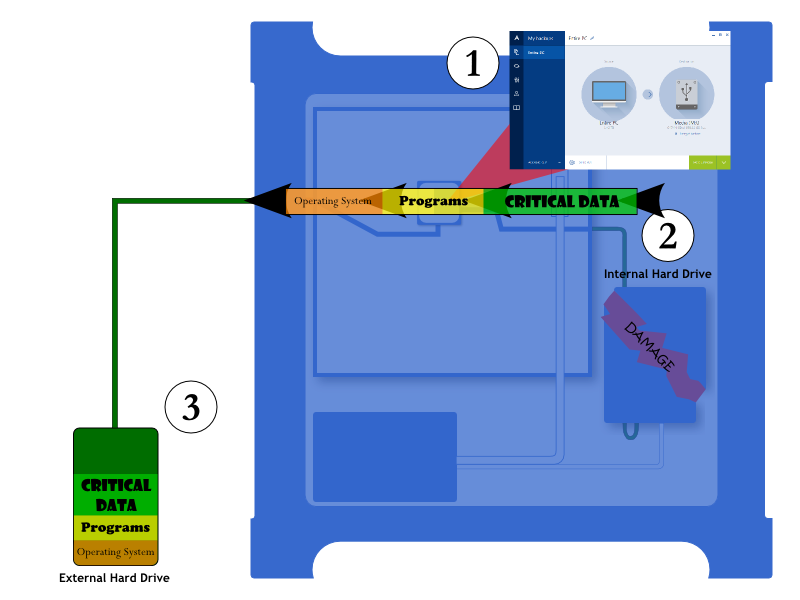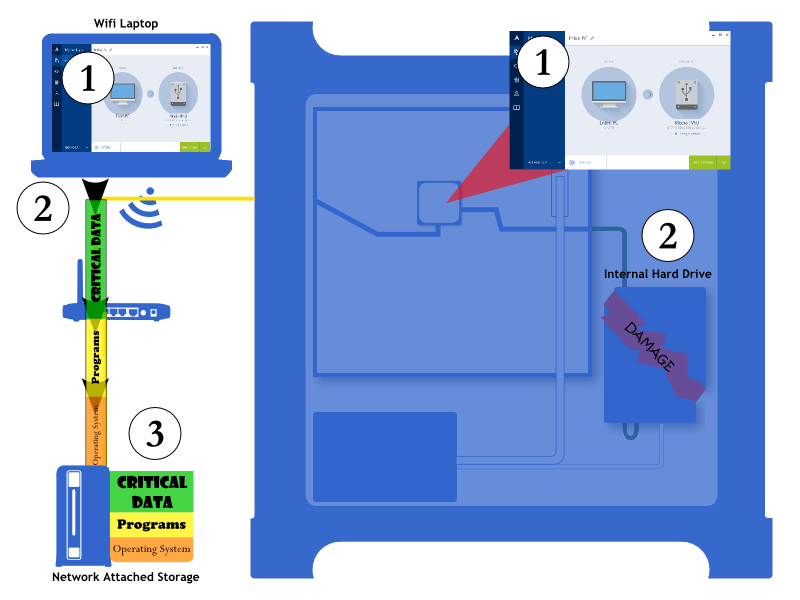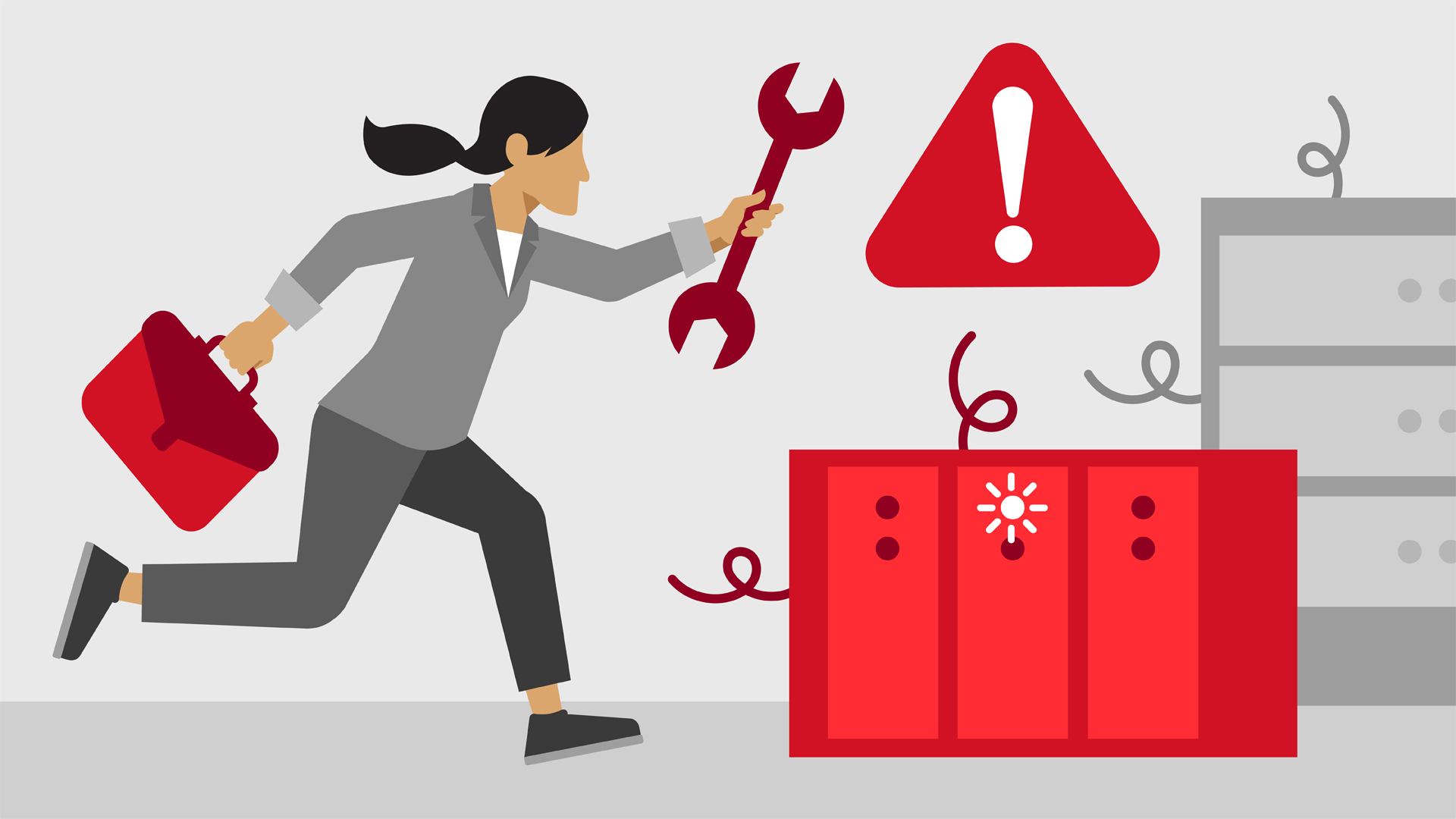A disaster recovery backup solution preserves a local copy of all data: Desktop Settings, Programs, and personal/business data like (Documents, Pictures or Music) onto a local, network, or cloud based storage device. If any of your working device components fail catastrophically, your system state (all data related to the functioning of your device and your productivity) can be restored to a previous state (before the disaster) in full running condition with minimal down time. Depending on the particular situation, having to rebuild your system state involves a significant amount of time and money. A disaster recovery solution is like insurance, it protects you when a disaster strikes.
“I am prepared for the worst, but hope for the best.” - Benjamin Disraeli
Quick tips to help you recover from a disaster
- Most devices have what’s called the “Recovery or Installation Media” on the internal hard disk. You will need a copy of that recovery or installation media if the storage component of your device fails. Usually a tool is installed on your device by the manufacturer of that device to make a physical copy of that media. To find out how to access that tool do a search on your device or on google for your device’s manufacturer’s name like “dell” or “hp” plus the words “recovery” and “media”
- Make a list specific applications that might need to be reinstalled and reconfigured to return to normal business.
- If you have a current backup now have you tested it to make sure you can recover the data you want to preserve?
Case Example
Recently a customer called me about a computer disaster. The customer explained that Windows 10 decided to update itself right in the middle of authoring a critical document. The worst part about this situation was this customer was completely locked out of the device and had been waiting hours for the update to complete before the call. Sometimes its not entirely clear when these updates will complete. Windows updates can sometimes take all night, or sometimes get completely stuck forcing you to take drastic measures.
With a disaster recovery solution in place you can protect yourself from:
- Downtime by avoiding lengthy repairs to your data or system configuration.
- Costly repairs or recovery of the data on your device when it fails.
- Malware or Ransomeware infections by being able to restore from a previous backup.
See my remote system management service packages for more information about keeping your device protected from a data loss situation.
How the disaster recovery process works and what to expect (Additional Material)
[]{#local-disaster-recovery-service}
Local Disaster Recovery Service
A local disaster recovery solution backs up your device by transferring your system state and all data to a local external storage media connected to the device on a scheduled basis. The schedule is determined by the retention policy (A method to set how often backups are being perform and for how long they are stored before they are cleaned up). The retention policy and schedule will be set based on your needs that I will discuss with you before I setup the solution.
- Below is a diagram showing how the process works:
::: {.header-image}
 :::
:::
[]{#network-disaster-recovery-service}
Network Disaster Recovery Service
A network disaster recovery solution is very similar to a local disaster recovery solution except that it backs up your device’ data by transferring your system state and all data to a network attached storage device (An appliance device containing storage devices connected to a network). Devices that are connected to your home network will see the NAS device and transfer backup data to it on a scheduled basis.
- Below is a diagram showing how the process works:
::: {.header-image}
 :::
:::
Network Attached Storage Device Features
The NAS Device includes a cloud storage feature so all of multiple users can store, access and sync important files in one place minimizing file duplication across all devices.
[Network Speed Limitations]
The speed of disaster recovery solution is important. If the backups take to long to complete this slows down your ability to work and creates more room for failures in the backup process to happen. Depending on your current network hardware (Modem and Router) an upgrade to that hardware may be required to meet the minimum speed requirements of a backup completing successfully in a reasonable amount of time. In the case of a network disaster recovery service I need to spend some additional time performing a network site survey of your home network environment to make sure it’s up to speed with any solution I put into place. Site surveys typically cost \$250.00 flat rate for a 4 users network.
